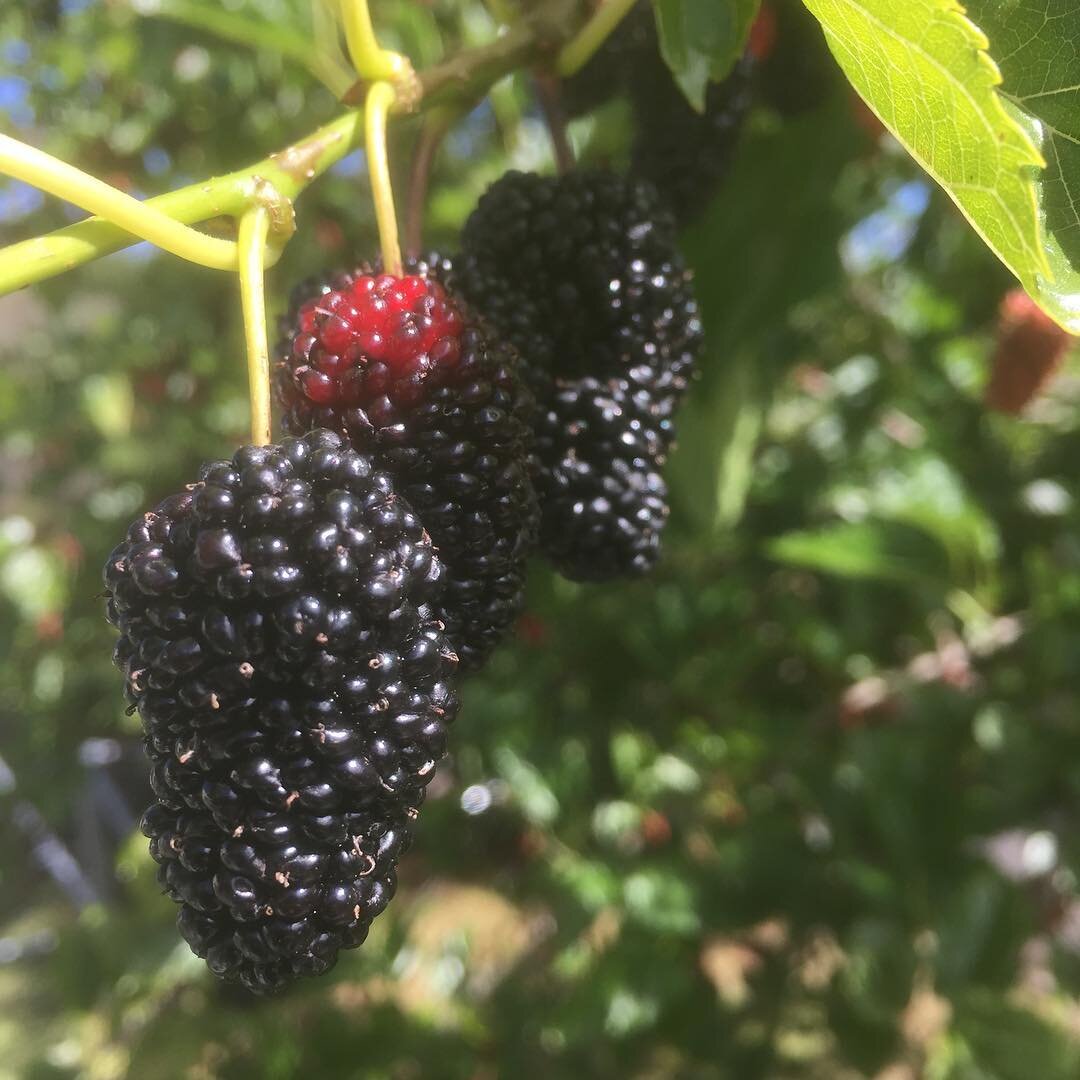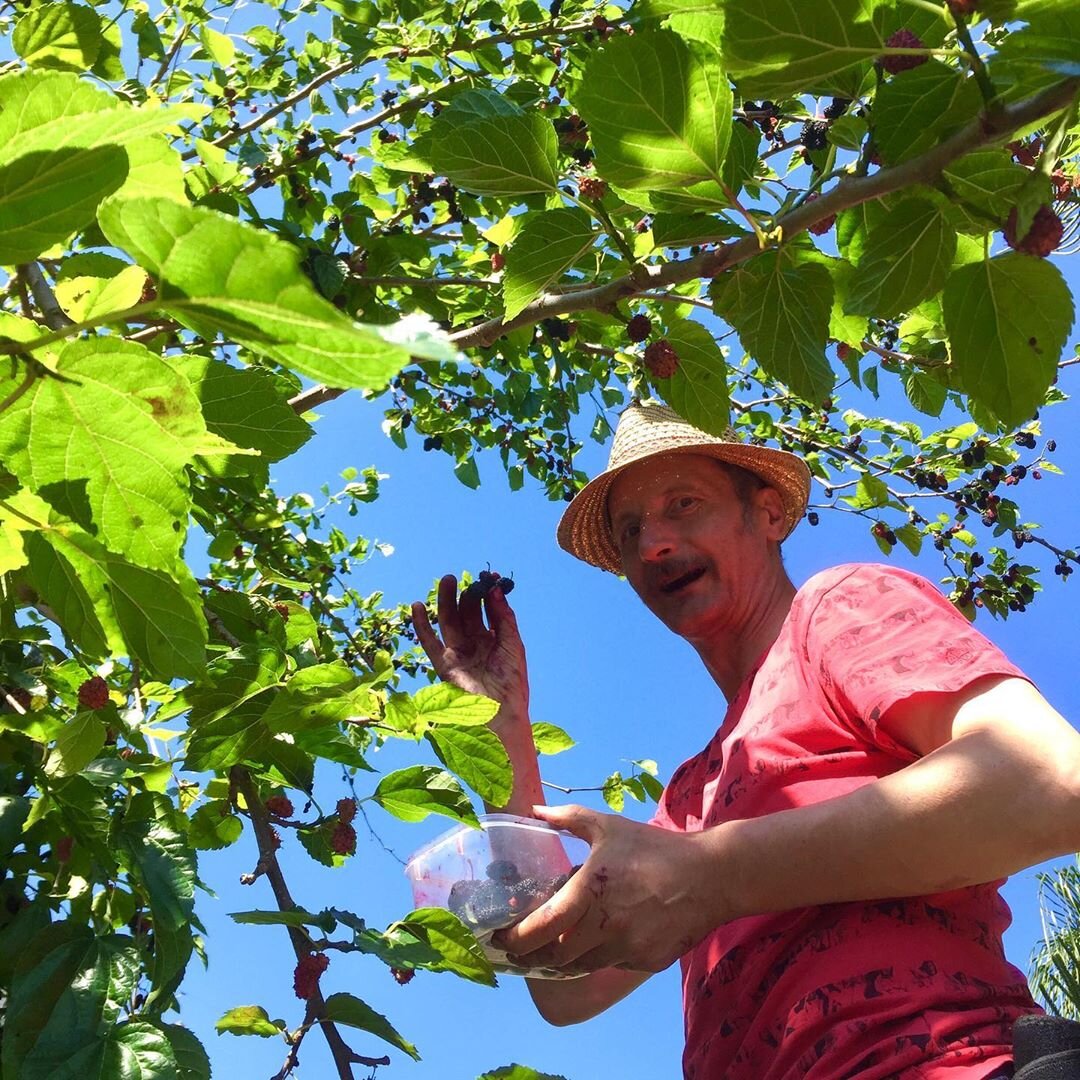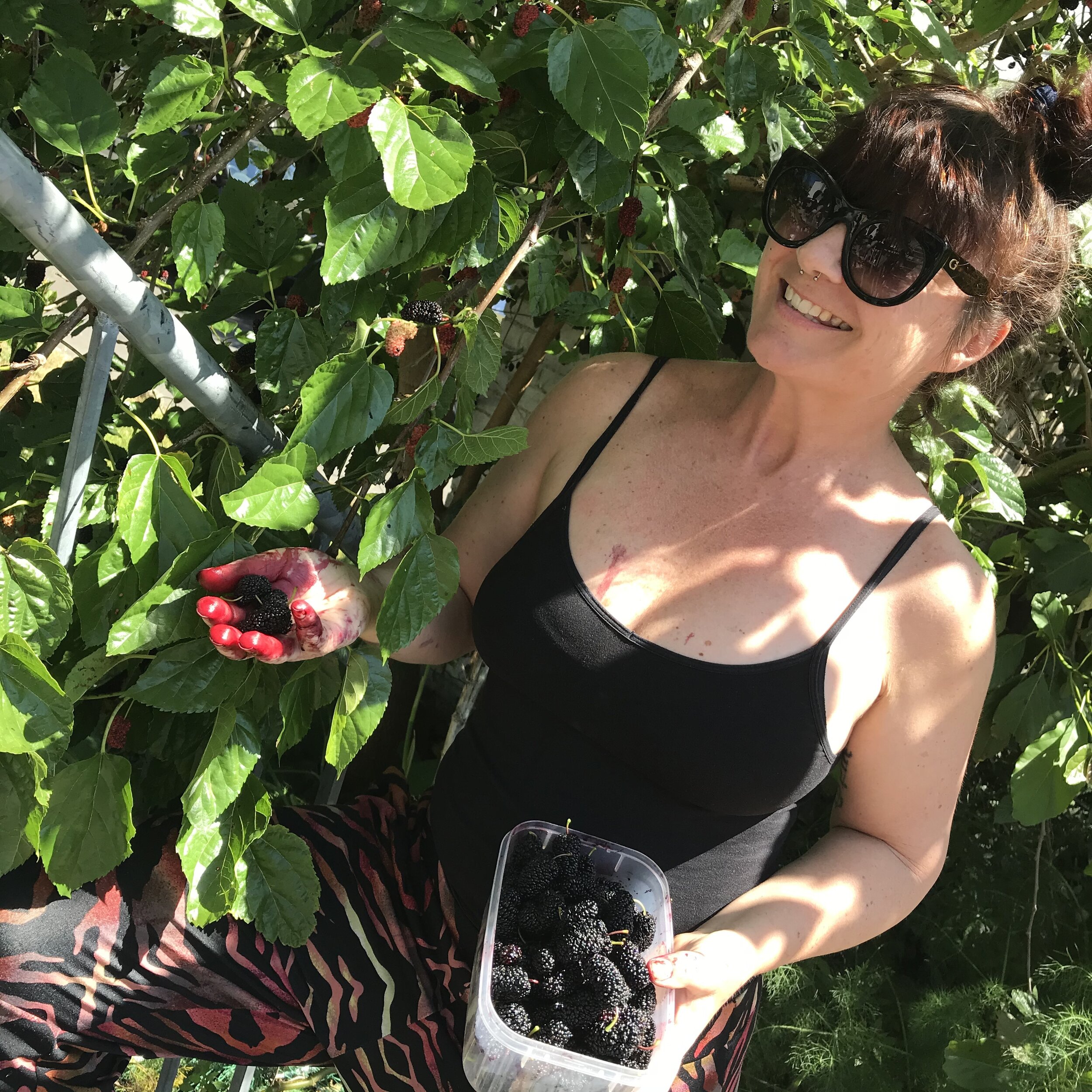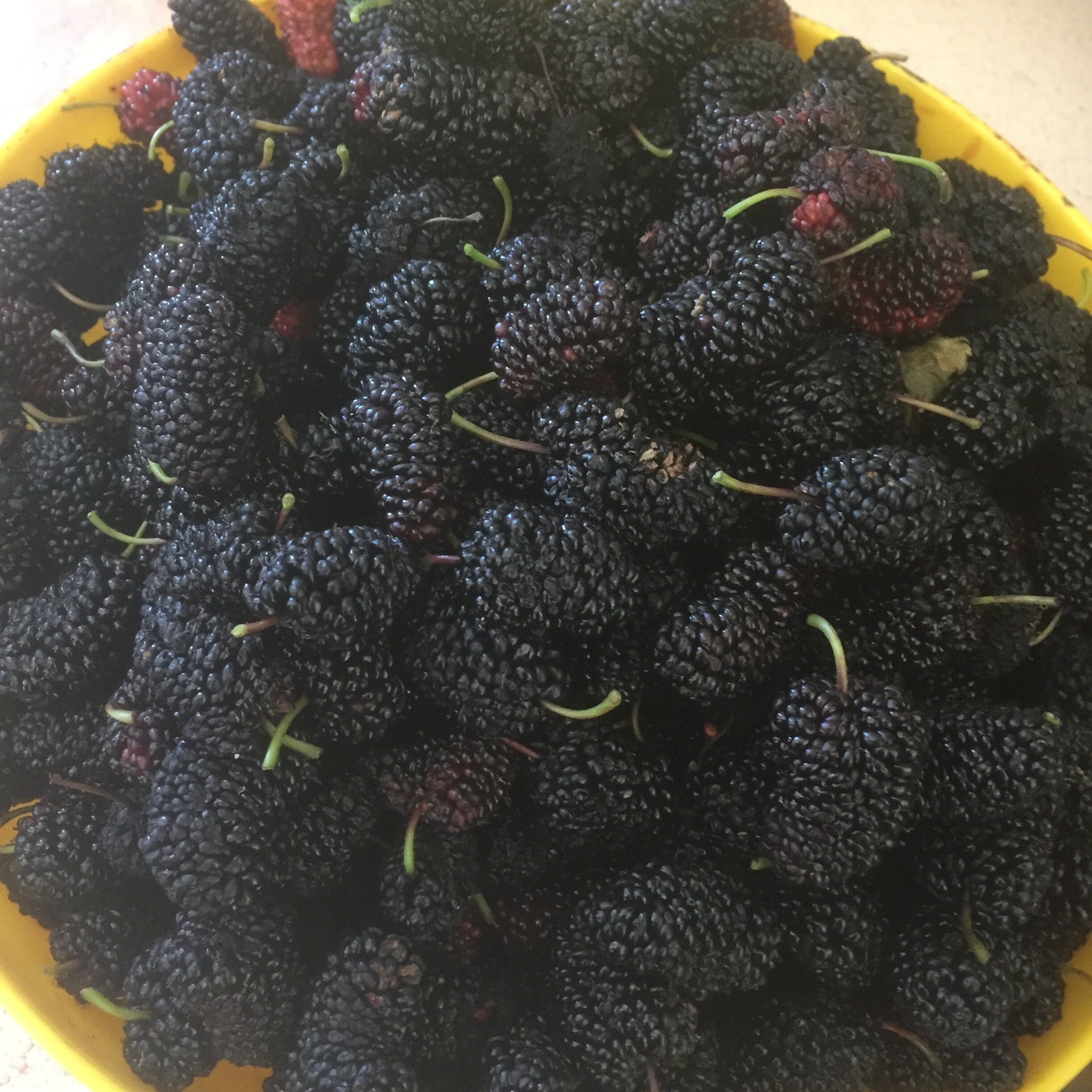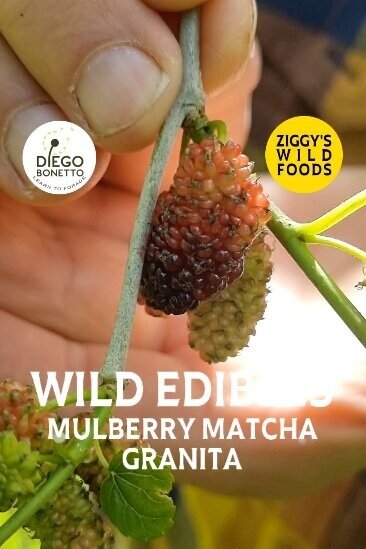mmmm moorish mulberries!! How to take advantage of the seasonal bonanza
Yay, it is that time of the year again.
Who hasn't pulled down the branches of a mulberry tree to reach those succulent treats?
I distinctively remember my mother scolding my sisters and I every second day for a 4-6 week period during mulberry season, because we made such a mess of ourselves! How can one resist? So good, so sweet and so addictive, you cannot stop. Always one more, juicier, sweeter, further up the branches!
SO here we are Australia, the season is about to start, some of the wild trees scattered around by birds already have the first fruits turning in colour. Before you know it there will be bucket loads of them on the floor, on cars, on footpaths and on your hands and clothes!
Mulberry season!!
My tip, unless you want the hands of a purple people eater, wear gloves, you can get compostable gloves for this.
Would you like to know where your closest tree is? Just ask a local kid and they will point one out to you.
So here we go, below is a bunch of information about this glorious, and delicious tree, and further down a set of recipes, yay!
WHERE IS MULBERRY FROM?
Mulberry mapping by Atlas of Living Australia
There are about 200 species of mulberries (Morus spp.) but by far the most common ones are only three: White mulberries - Morus alba- from South East Asia; Red mulberries - Morus rubra - from North America and Black mulberries- Morus nigra- from the middle east.
In Australia, we have two varieties naturalised, the black and the white ones. They are easy to spot in your neighbourhood as there would be swarms of kids all around them at his time of the year. And chances are you, like me, were one of those kids too.
The map from Atlas of Living Australia says that can be found pretty much everywhere, from Hobart to Darwin and from Cairns to Perth. Chances are you have it in your hood.
HOW DO YOU HARVEST AND EAT MULBERRIES?
The trick to mulberries - like any other wild fruit tree- is timing. You have to harvest the fruits in sessions, picking the fully ripe ones first, leaving the immature ones for later. Over a period of 4-6 weeks, you should visit the tree at least 3 times. By harvesting in session you will ensure that you always pick the best ripe fruits, you ease the weight of the swollen fruit from the branches preventing the tree to brake under the weight of its own fruit ( yes it happens), prevent the fruit from spoiling on the tree so that it does not get infested with fruit flies (hence getting the little white worms inside) and it prevents the fruit to fall on parked cars and footpaths, infuriating your neighbour who may then decide to take it upon himself to cut down the glorious tree. ( yes this happens too).
You can eat the fruits raw or cooked in pies, jams, pastes and syrups. They have a delicious and slightly acid flavour making it an excellent dessert fruit that can be eaten in quantity. The fruit can also be dried and ground into a powder. For fresh fruit to serve on cakes and icecream pick the ripest mulberries. For jam making it is best to pick the fruits slightly unripe, as their acidity will help with the setting of the jam. Please remember, before cooking you need to de-stem every-single-one. Yes, boring, but worth the effort.
See below for a mulberry paste recipe videoed by the amazing folks at Wolktolk. The recipe comes from the amazing Marnee Fox and is part of our Forage to Feast degustation and storytelling events.
INGREDIENTS
2 CUPS OF MULBERRIES
1 CUP OF CUSTER SUGAR
1 LEMON RIND
1 TBSP OF LEMON JUICE
1 TSP OF ROSEWATER
1 TSP AGAR AGAR POWDER
MULBERRY AND THE SILK WORMS
Mulberry trees are most famous as a school activity for kids, even beyond the eating of the berries. Quite a common biology class activity in schools all over the world is the growing of silkworms in class so that the pupil can see first hand the growth of the little eggs into grubs. The little grubs feed on mulberry leaves and get bigger and bigger until they reach the pupa stage and spin a cocoon for themself.
The silkworms were a best-kept secret by Chinese for millennia. Evidence suggests that the cocoon were spun in the precious silk as far back as 4000 BCE, that’s six thousand years ago. The cloth was traded all over Asia and Europe via the Silk Road but it was not until the first millennium that the secret got out and people started to spin their own silk. See here for a brief history, fascinating stuff!!
So here it is, mulberry season. Go for a walk in your neighbourhood as now is when it is easy to recognise the plants, as the fruit is blooming. Take advantage of it, that’s what they are for.
Thank you trees!
Yay for weeds.
All hands on board
Harvesting time! Check out the fingers!!
Fresh mulberries
Cooking mulberry jam
Stacking the pantry
This article is an extract form the upcoming publication Eat Weeds, due to be released by Thames&Hudson Australia in early 2022.
The publication has been supported by the City of Sydney via its Creative Fellowship Fund.

